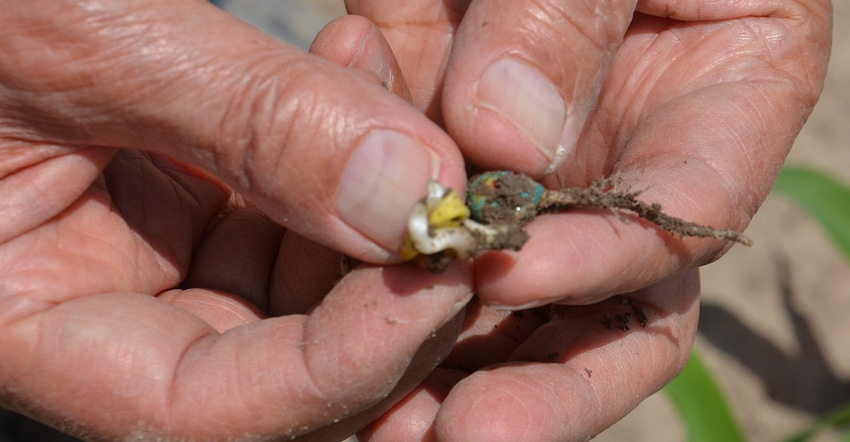
There is a “wrong day” to plant every year. The trouble is, there is no way to know which planting day will produce poor stands and season-long headaches until after the fact.
“The wrong day to plant in our area this year was June 14,” says Ronnie Mohr, Greenfield, Ind. Plagued by continual showers and saturated soils, farmers in the area hustled to plant as many acres of corn as possible on June 14. The area was besieged by heavy rains that evening and over the next few days. In fact, it rained every day for 10 days.
Very little of that corn they hustled to plant came up, Mohr reports. It forced him and others to reshuffle plans for finishing planting.
Steve Gauck, Beck’s sales agronomist based near Greensburg, Ind., was one of the seedsmen who looked at those fields. Reps from other companies looked, too.
“The other thing you have to know is that it went from the mid-70s or 80s down into the 40s at night right after planting, and it did it again the next day and night, as well,” Gauck says.
He couldn’t blame farmers for being confused or looking sideways when he explained what he believed had happened. On the other hand, you can’t make this stuff up, Gauck insists.
“You’re not supposed to get chilling injury which affects germination in mid-June, but that’s what was going on with corn,” Gauck explains. “It was just an unusual set of weather conditions which drastically impacted the seed. It didn’t matter which hybrid or which brand of seed it was. This was so drastic that the seed simply didn’t have a chance.”
Chilling injury
The potential impact of chilling injury on seeds trying to germinate is well-documented, Gauck says, both by university research and work by private seed companies. It’s also known that if the first drink of water a seedling gets is very cool, it can have detrimental effects.
The Purdue University Corn and Soybean Field Guide addresses the impact of cold soils on corn as a possible stress. It notes that cold injury can be caused by long periods of soil temperatures around 50 degrees F, or by wide daily temperature swings, such as from the mid-80s in the day to the mid-40s at night.
Symptoms are coleoptiles failing to emerge, which translates into seed that sits there without anything happening. If germination starts, parts of the seedling can corkscrew and take on odd shapes, resembling herbicide damage.
“I’m convinced it was the wide temperature swings which caused the damage this time,” Gauck says. “It’s just hard to believe it happened in June, but it did. We saw it on our own farm, too.”
Soybeans can be affected, but usually not as severely. “Several soybean fields planted June 14 were later replanted, too, but that was more likely due to too much rain which led to crusting and other issues,” Gauck notes. “But there’s no doubt chilling injury did in lots of corn acres planted that day.”
About the Author(s)
You May Also Like




